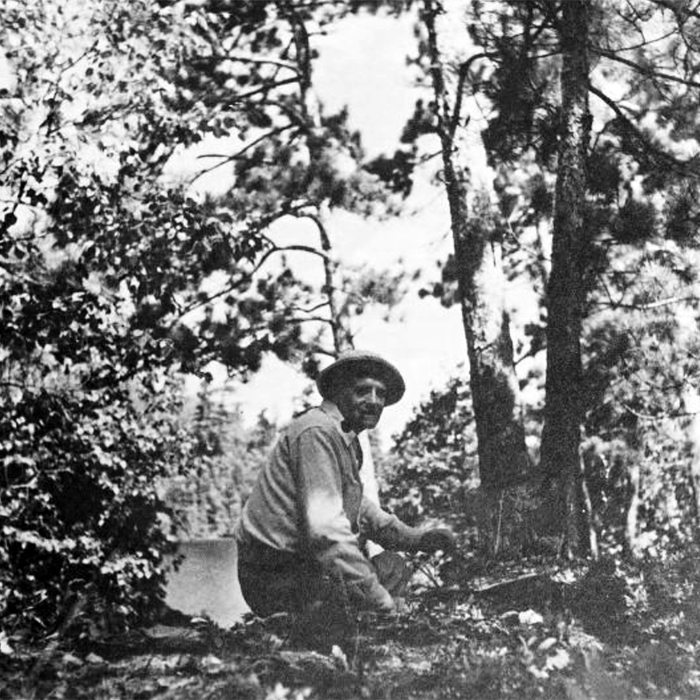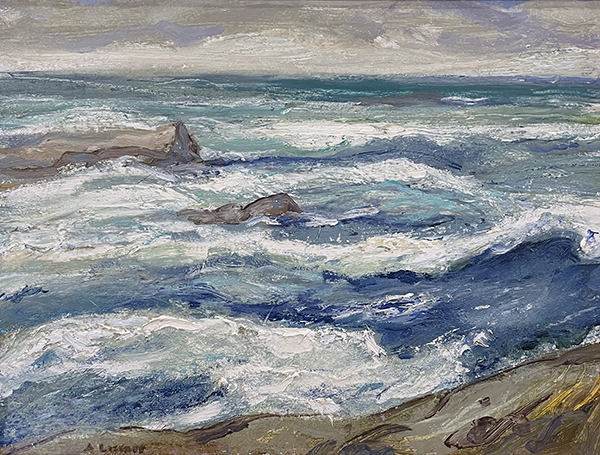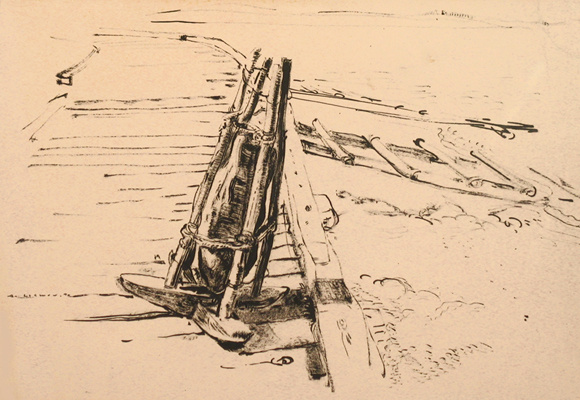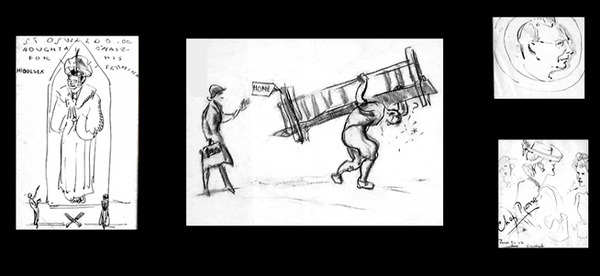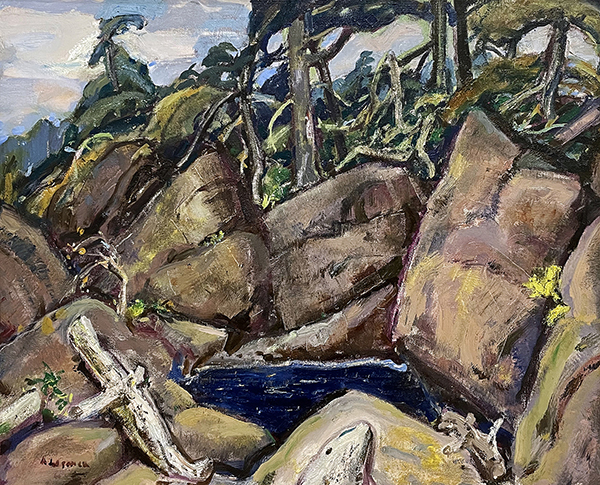Arthur Lismer
Arthur Lismer (1885-1969) – Artist Biography
As an immigrant from England, Arthur Lismer was fascinated by the Canadian landscape of rocks, pines, and expansive stretches of tumultuous water and sky. From 1920 he was a member of the Group of Seven, painters who advocated a new Canadian art that expressed the spirit of the nation through its landscape. Throughout his life he was a dedicated painter and draftsman and visionary teacher.
Lismer attended the Sheffield School of Art in the evenings on a scholarship (1898-1905) and during the day apprenticed at a photoengraving firm. In 1906 he studied at the Académie Royale des Beaux-Arts in Antwerp. He returned to Sheffield, where he worked in a commercial art studio before moving to Canada in January 1911.
Hired at the commercial art firm Grip Limited, and later at Rous & Mann, in Toronto, he met fellow artists J.E.H. MacDonald, Franklin Carmichael, and Tom Thomson. In 1913 he went on his first painting trip to Georgian Bay with his wife, Esther, and their baby daughter, and in 1914 to Algonquin Park.
In 1916 Lismer became principal of the Victoria School of Art and Design (now the Nova Scotia College of Art and Design) in Halifax. In 1917 an explosion in Halifax Harbour destroyed large sections of the city. Lismer captured the aftermath of this catastrophe in a series of drawings first published in the Canadian Courier. In 1918 he was commissioned by Canadian War Records to record returning troopships in Halifax Harbour in paintings and in lithographs. In 1919 he moved back to Toronto and became vice-principal of the Ontario College of Art (OCA).
Lismer was a charter member of the Group of Seven, and joined his fellow artists on painting trips to the Algoma region and north shore of Lake Superior. In 1928 he painted in the Rockies and from 1930 in the Atlantic provinces. His Impressionist-influenced paintings of the 1910s evolved into a more angular and cruder expression that he equated with the Canadian terrain and national identity. In his later work, Lismer concentrated on detailed foregrounds and tightly framed, close-up compositions of vegetation and land formations.
Lismer resigned from OCA in 1927 and became supervisor of education at the Art Gallery of Toronto (now the Art Gallery of Ontario). He became a leading figure in child art education working in Toronto, South Africa, New York, and Montreal, where he moved in 1940. He taught at the Art Association of Montreal (now the Montreal Museum of Fine Arts) from 1940 until 1967.
A retrospective exhibition of Lismer's work was organized by the Art Gallery of Toronto in 1950. The following year he travelled to Long Beach, Vancouver Island, where he spent summers for the rest of his life, and where the ocean and dense forests provided a new landscape to sketch and paint.
Selected Permanent Collections:
Art Gallery of Ontario, Toronto ON
Art Gallery Of Nova Scotia (Halifax, NS)
Art Museum of Sao Paulo, Bern (Bern, United States)
Beaverbrook Art Gallery (Fredericton, NB)
Canadian War Museum (Ottawa, QC)
Dalhousie Art Gallery (Halifax, NS)
Jack S Blanton Museum of Art (Austin, TX)
McMichael Canadian Art Collection (Kleinburg, ON)
National Gallery of Canada (Ottawa, Ontario, ON)
National Museum of American Art-Smithsonian (Washington, DC)
Oakland Museum of California (Oakland, CA)
Owens Art Gallery/Museum (Sackville, NB)
Quebec Museum of Fine Arts (Quebec City, QC)
Sheffield Art Galleries G & Mappin (Sheffield, United Kingdom)
Sheldon Museum of Art (Lincoln, NE)
Bio c/o: The National Gallery of Canada
Artist Specialization: Arthur Lismer’s style was influenced by his pre-Canadian experience (primarily in Antwerp), where he found the Barbizon and post-impressionist movements a key inspiration. Collaborating with the group of artists who would, in 1919, become the Group of Seven, Lismer exhibited the characteristic organic style, and spiritual connection with the landscape that would embody that group’s work. His Impressionist-influenced paintings of the 1910s evolved into a more angular and cruder expression that he equated with the Canadian terrain and national identity. In his later work, Lismer concentrated on detailed foregrounds and tightly framed, close-up compositions of vegetation and land formations.
